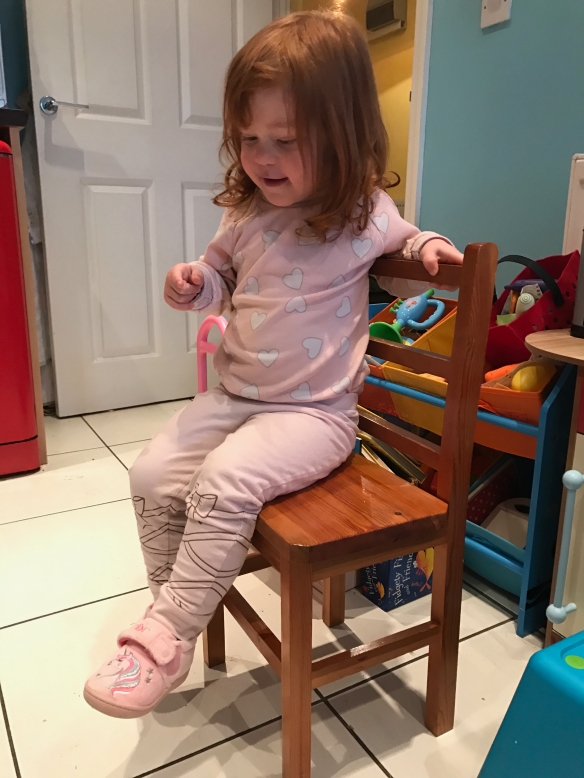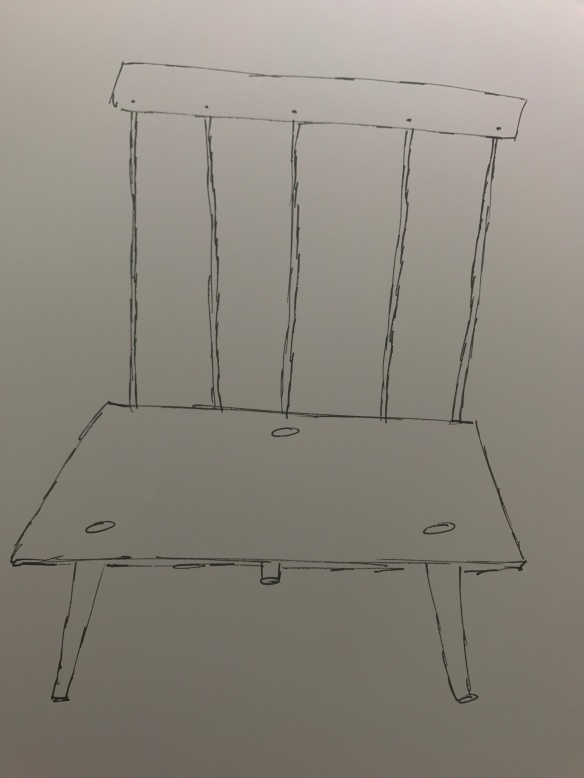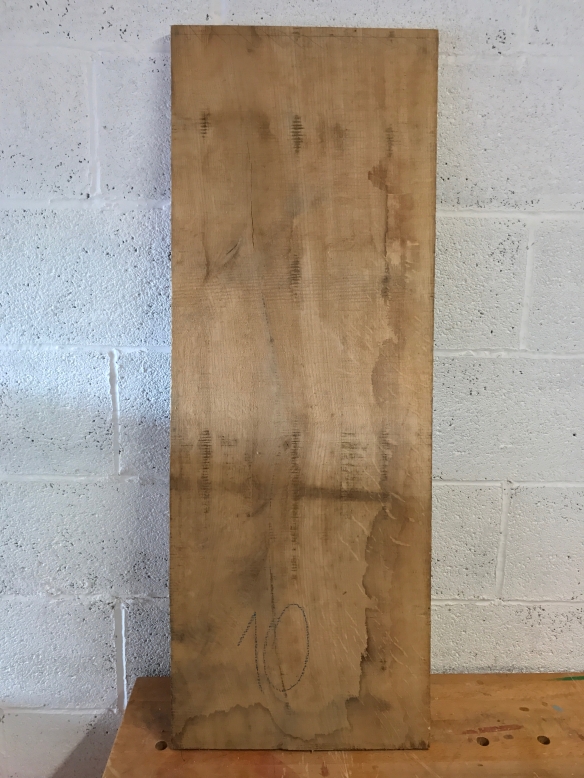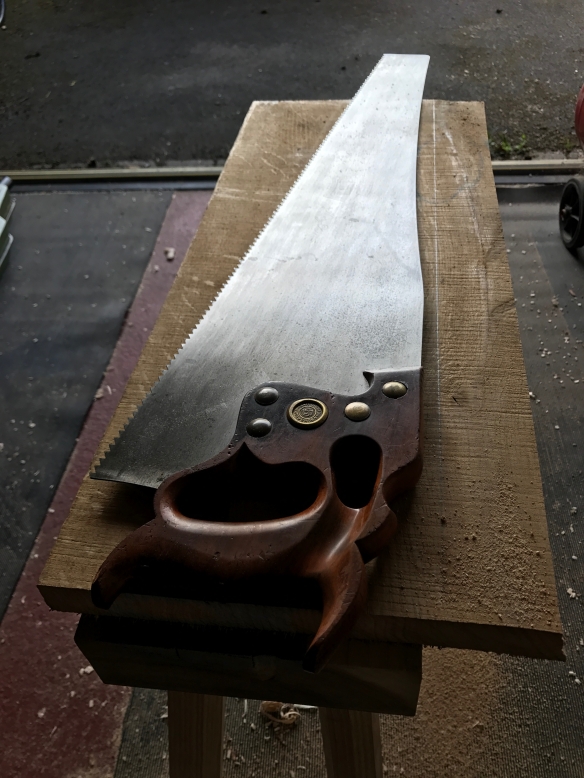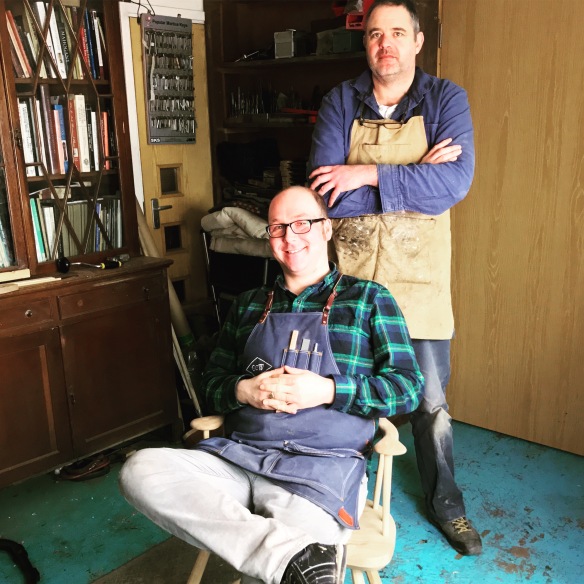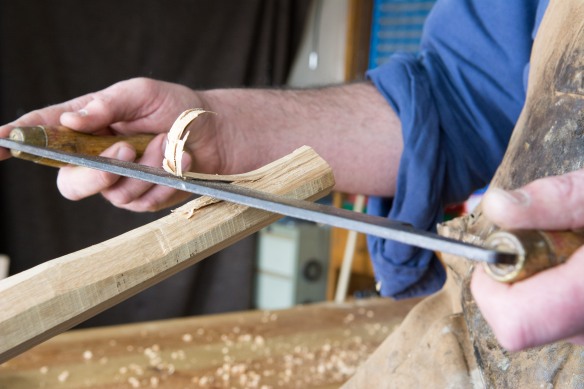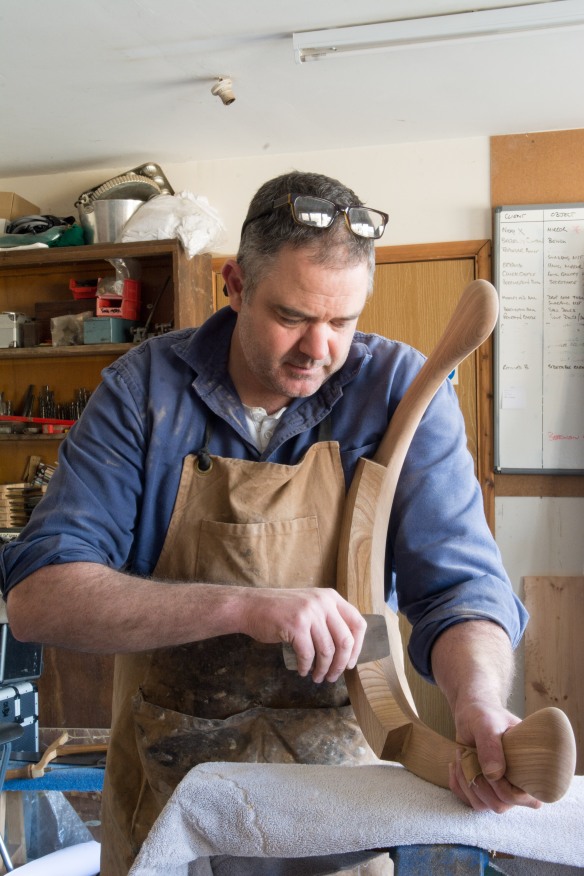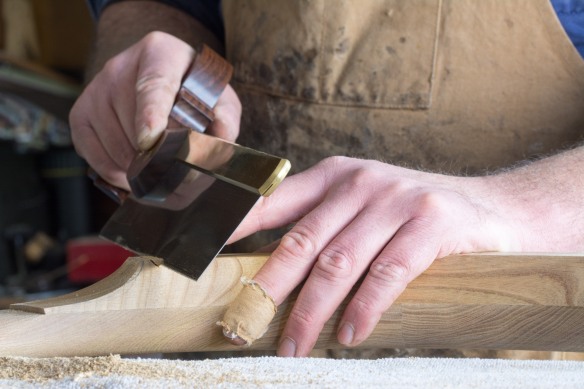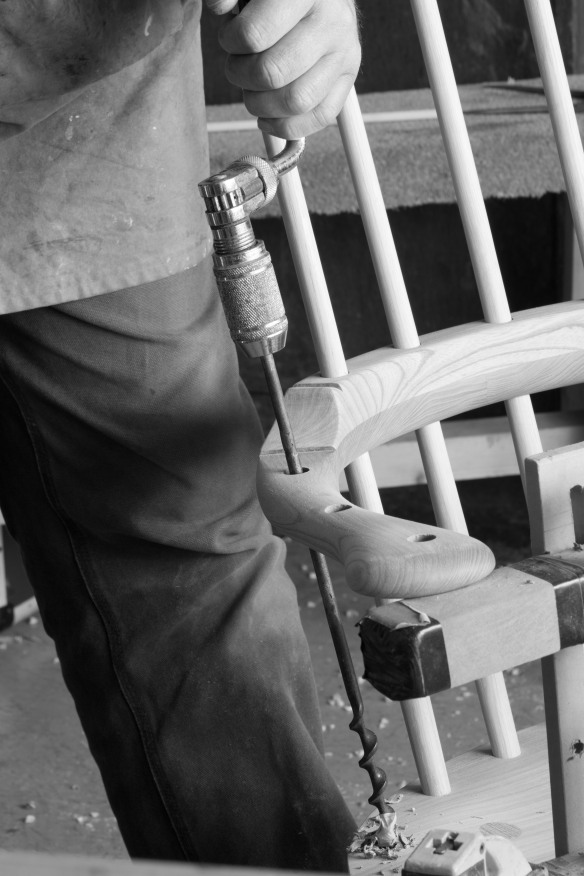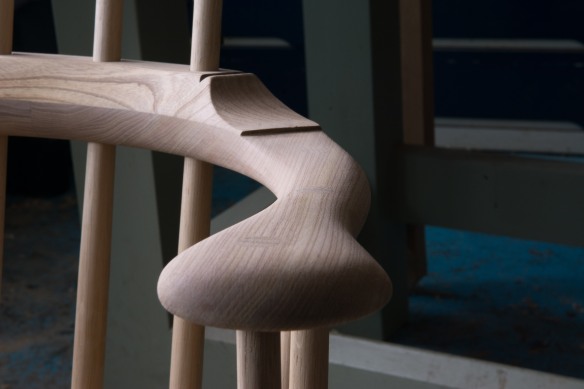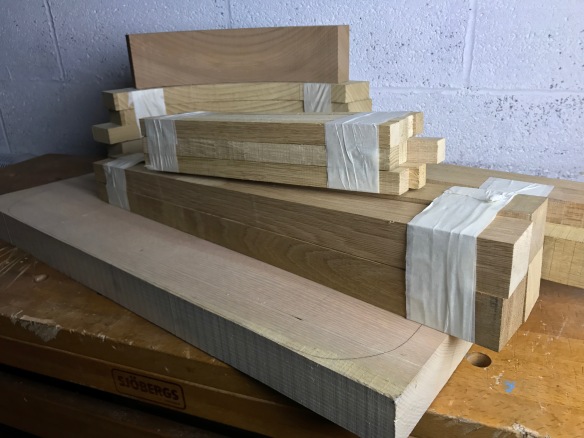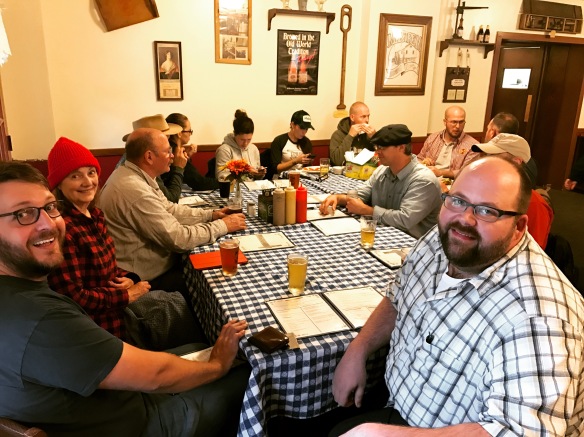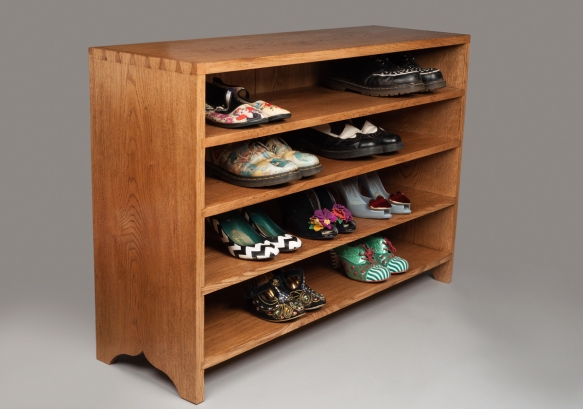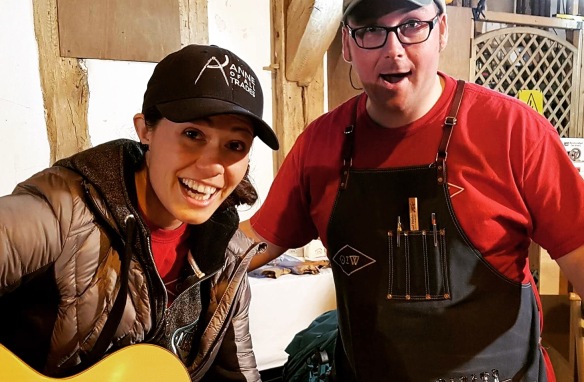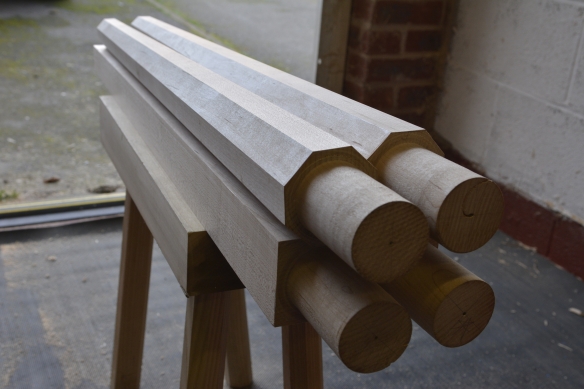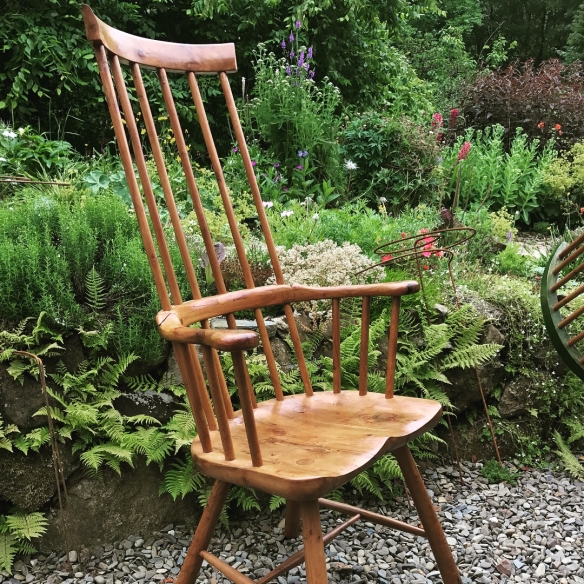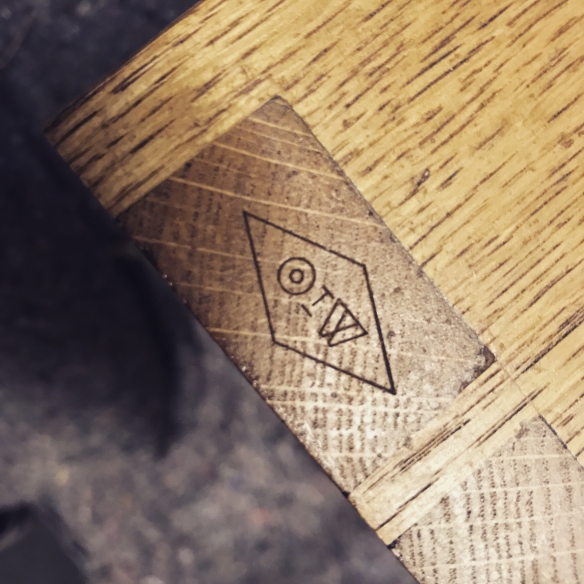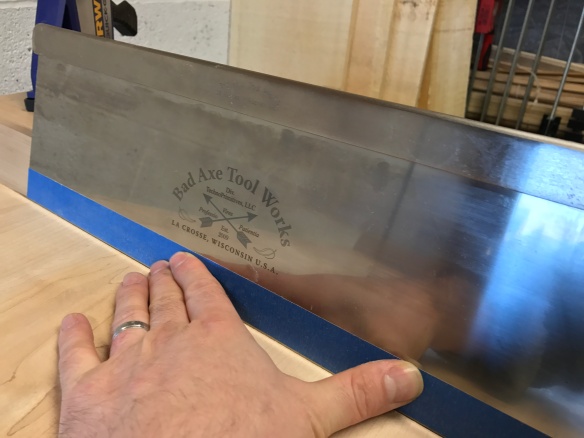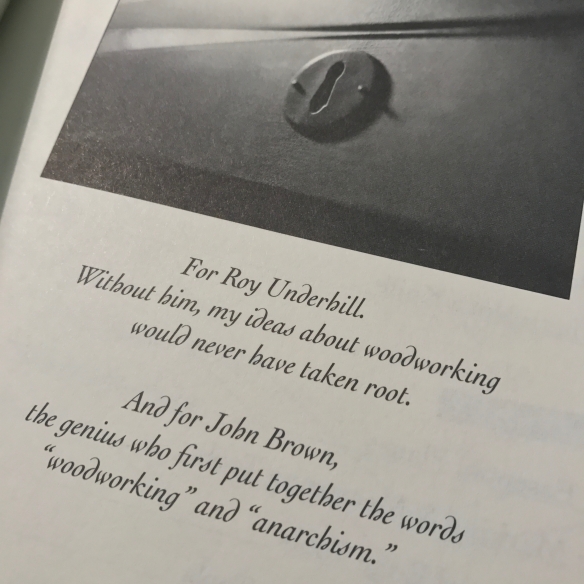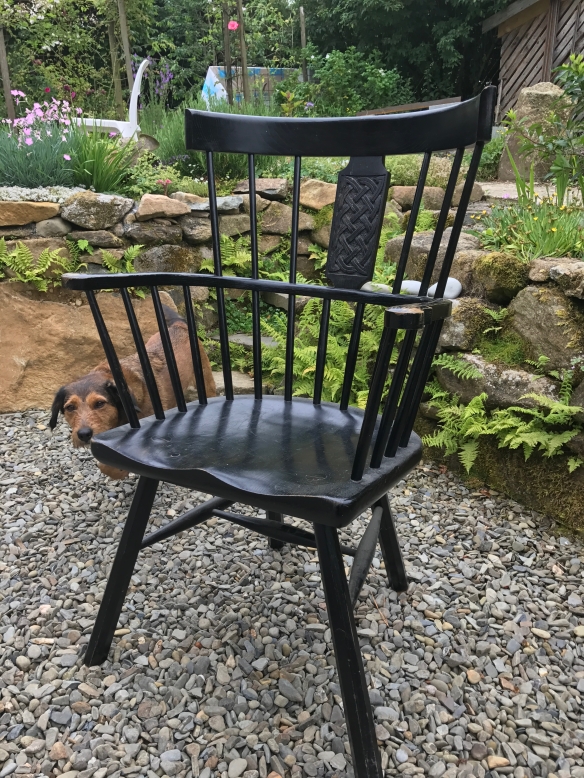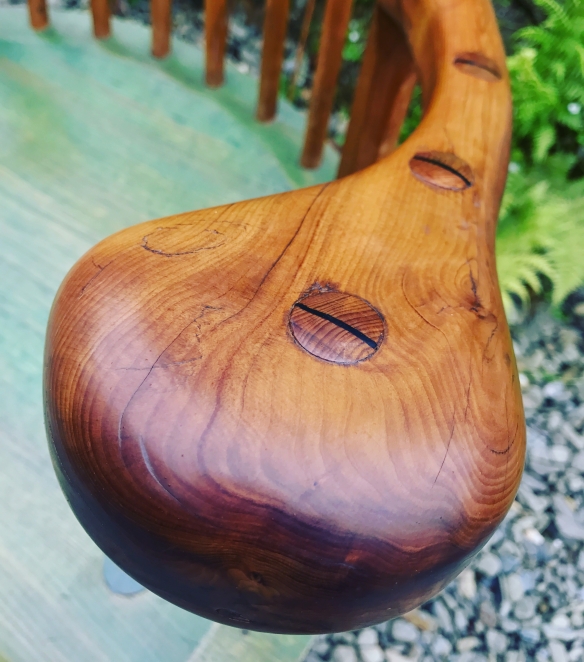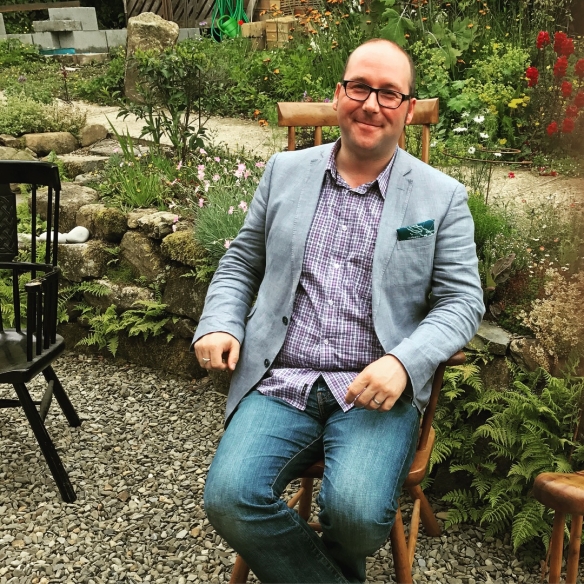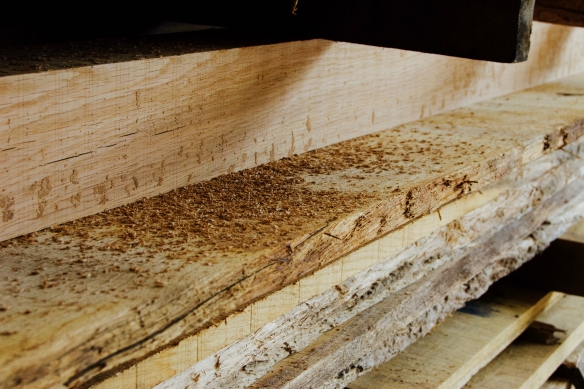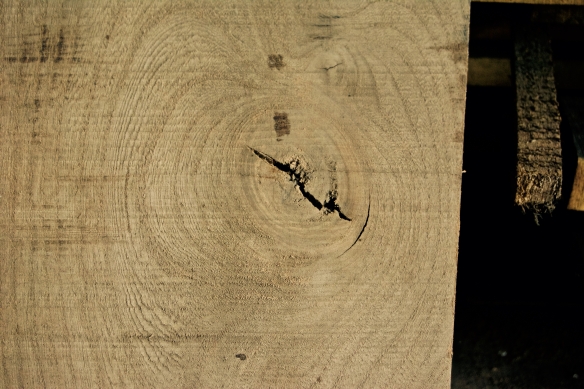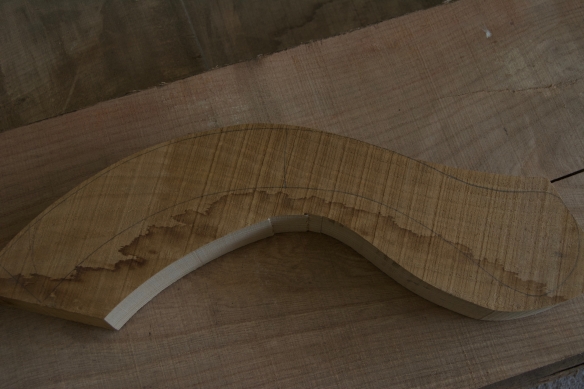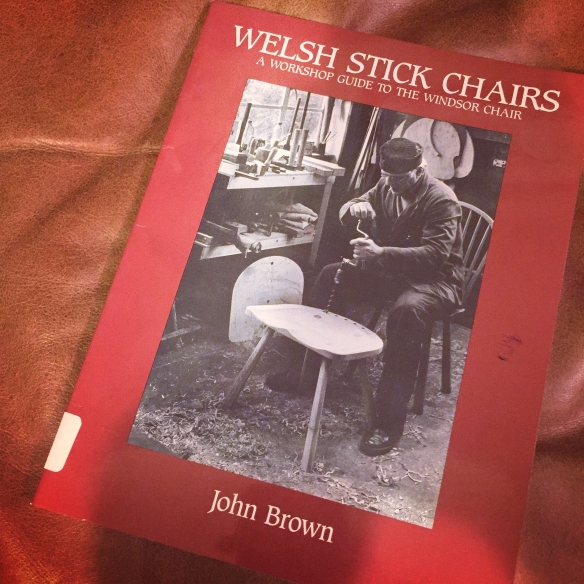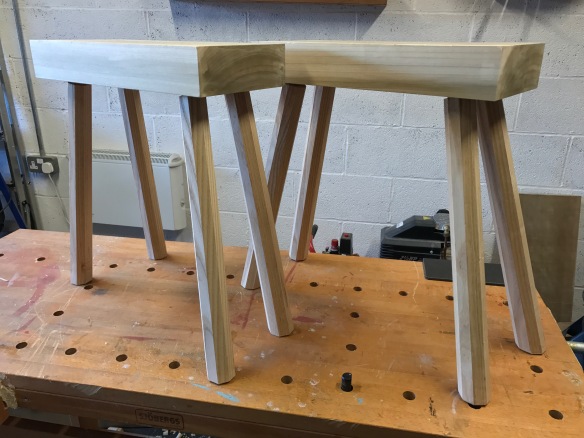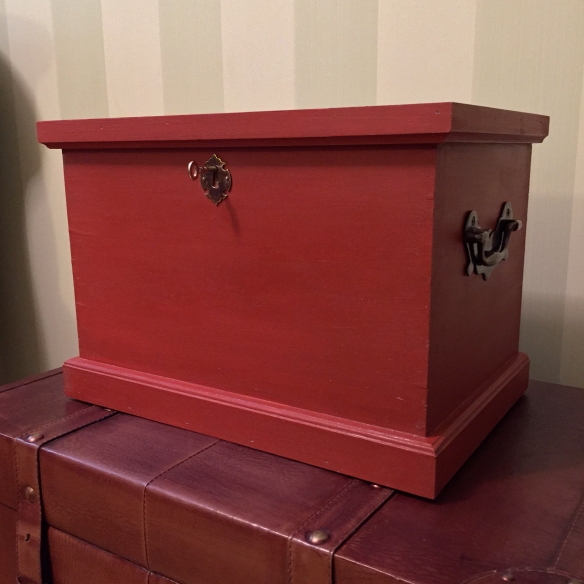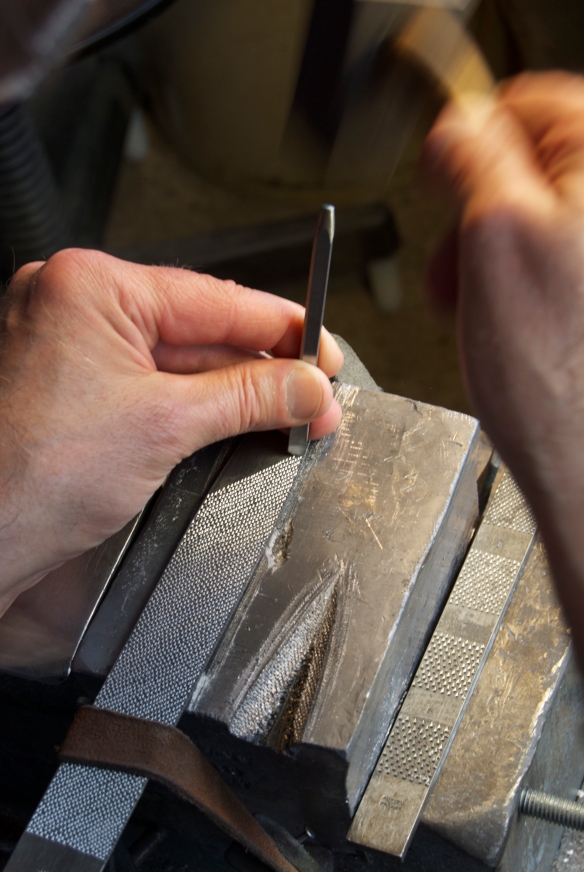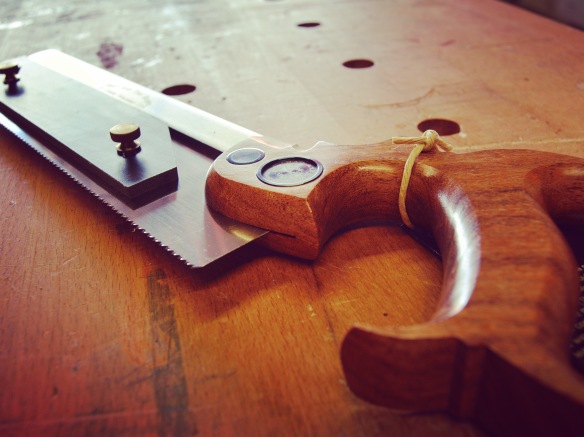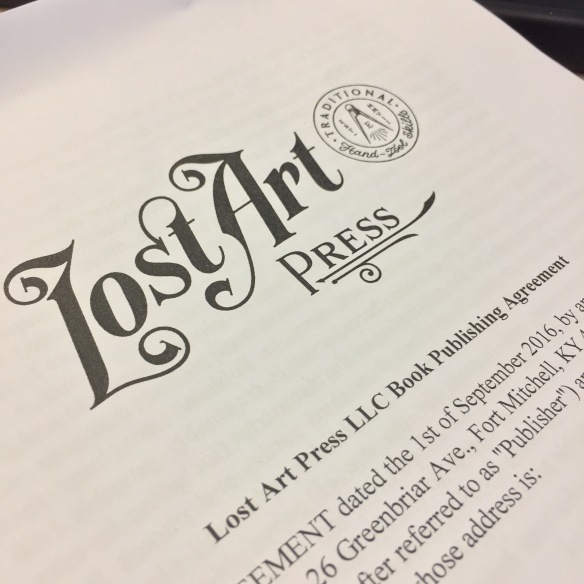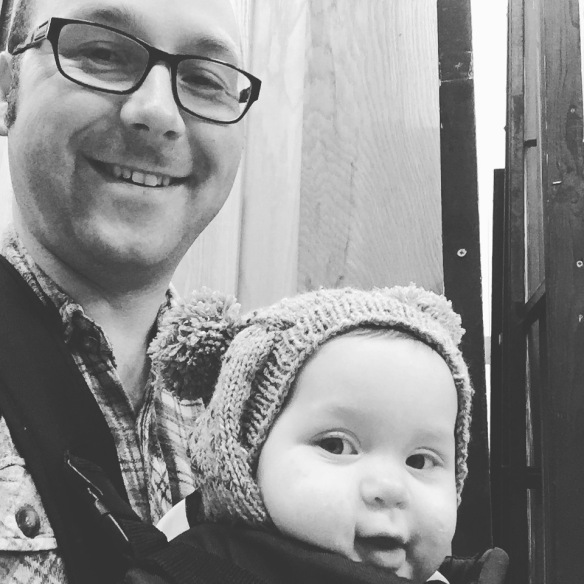The following is based on an article originally published in issue 268 of Furniture & Cabinet Making
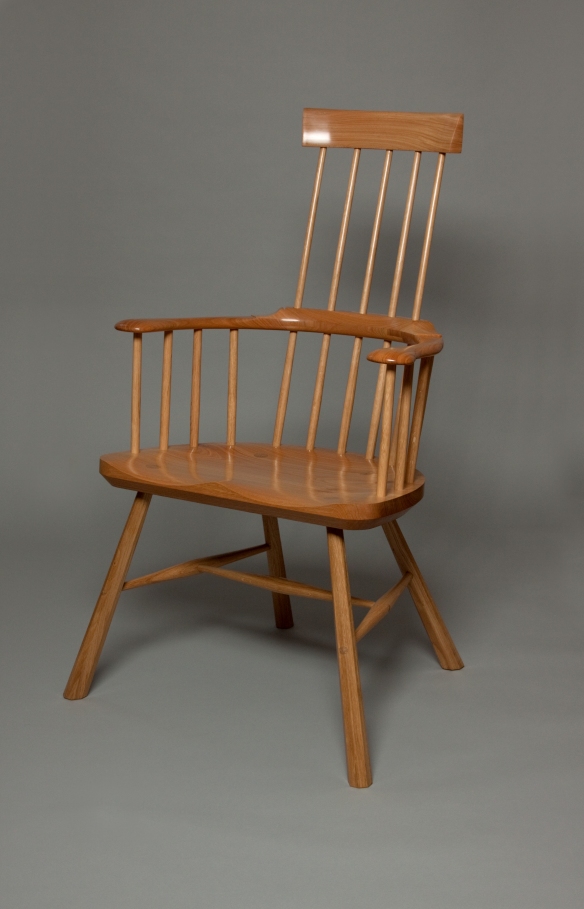
Blonde stick chair by Chris Williams, photograph by Kevin Thomas
I remember the very first time I saw a picture of a Welsh Stick Chair, how it appeared to be both familiar and completely alien. At first glance this chair shared common DNA with the Windsor chairs I was more familiar with, but there was also an underlying tension that felt very different to the Windsor chair form. More angular than Windsor chairs, the aggressive rake and splay of the legs, together with the distinctive comb perched atop four long sticks, gave the Welsh Stick Chair a dynamic silhouette suggesting a feral energy – this was a chair that wanted to spring out of the corner. I was hooked.
Several years on, and I find myself co-authoring a book for Lost Art Press about Welsh Stick Chair maker John Brown. My co-author, Chris Williams, is a Carmarthenshire-based Welsh Stick Chair maker and furniture restorer who worked with John Brown for a decade. The deep research required for a book has led us to many historic examples of Welsh Stick Chairs, as well as modern examples made by John Brown and Chris. That research has revealed a vibrant and enduring form that has evolved and been adapted over many generations, and which remains relevant today.
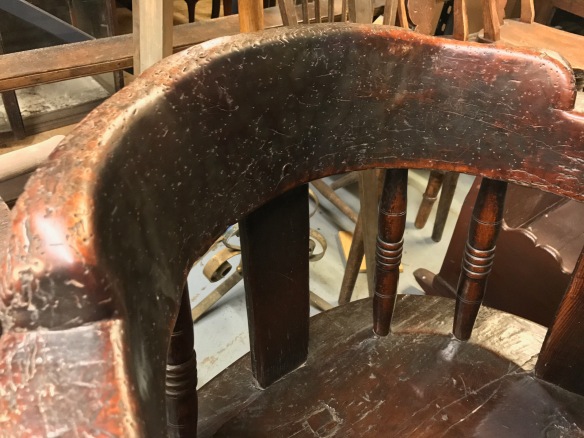
Single piece carved arm on an early Stick Chair
While a comprehensive survey of a chair form that has been in use for centuries is outside the scope of a magazine article, what is possible is to introduce a fascinating chair that continues to inspire chair makers and furniture collectors alike, and to explain the key characteristics that set Welsh Stick chairs apart from other forms.
Background
Boiled down to the basics, Welsh Stick Chairs are an example of staked furniture – a method of constructing chairs that has been in use since the medieval period. Staked furniture relies on a thick seat into which conical or cylindrical mortises are drilled, and matching tenons are back wedged. The result is a strong mechanical joint that requires minimal specialist tooling to prepare. In his book Welsh Stick Chairs, John Brown suggested that the lineage of Welsh Stick Chairs extended as far back as the 12th century. A 12th-century manuscript of the Laws of Hywel Dda (a 10th century Welsh King) includes an illustration of a judge, or possibly Hywel Dda himself, sitting on a chair very similar in form to surviving examples of 18th-century Stick Chairs. This is a long-lived form.
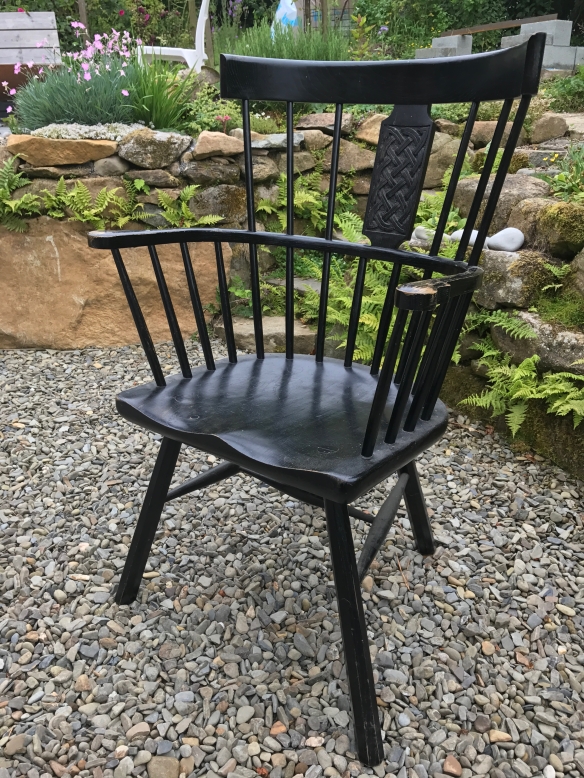
Stick chair by John Brown
Culturally, Welsh Stick Chairs are significant in that they were not typically built by chair makers, and instead would have been made by craftsmen from related woodcrafts such as “village carpenters, wheelwrights, or coffin makers” (John Brown). Welsh Stick Chairs then are furniture of necessity – a vernacular form made by (and for) common folk when they had need of something to sit on. That they were not made by professional chair makers also had a profound impact on the construction methods, and there is a notable lack of steam bending or turning in the Welsh Stick tradition compared to other chair making traditions.
Key Characteristics of a Welsh Stick Chair
As can be expected of vernacular furniture, there is a great deal of variety among surviving historic examples of Welsh Stick Chairs. That being said, there are also commonalities which make Welsh Stick Chairs instantly recognisable.
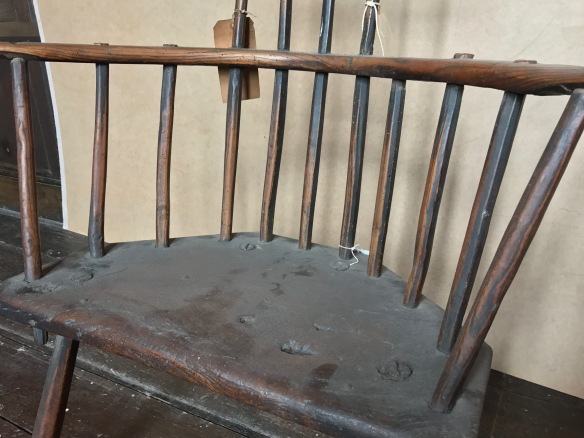
Sticks on a historic chair, showing tool marks and facets
Historic examples can broadly be split between arm chairs and comb back chairs. Arm chairs are very much as the name would suggest – a number of sticks hold the arm above the seat, so that it is supports the middle of the sitter’s back, and the sticks terminate at the arm. In contrast, comb back chairs feature long sticks at the back which extend through the arm and terminate in a decorative comb level with the occupant’s head.
It all Flows from the Arm
The element that really separates the Welsh Stick Chair from its Windsor cousins is the arm. The shape of a Windsor chair is typically determined by the dimensions and shape of the seat, with the legs and back flowing from the seat. In contrast, the shape of early Welsh Stick Chairs was defined by the curvature of the arm. This is in large part due to the practice of using timber with a natural bend, such as a curved branch or crook, rather than steam bending. The curve of the arm would be refined by carving excess material away from a heavy crook while retaining the natural strength of the grain (which would flow the full length of the arm). With the shape of the arm defined, the position of the sticks would then be laid out and the arm joined to the seat. The result is a distinctive organic curve to the arm, and an arm which on early examples is often visually heavier than steam bent arms. A later development was the use of arms constructed from two or three pieces of timber using scarf joints, with the third piece being placed on top of the two major pieces to reinforce the short grain at the apex of the curve. Combs would also have typically been made from a naturally curved piece of timber, or a curved part would have been cut to shape rather than steam bent.
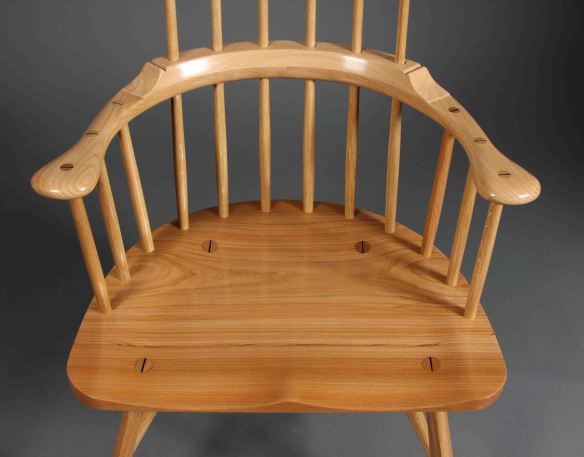
A three piece arm by Chris Williams, photograph by Kevin Thomas
Saddle Up?
Early Welsh Stick Chairs had a seat that is wider than it is deep, and the shapes vary from simple rectangular examples to curved seats which more closely follow the curve of the arm. Many examples show little or no saddling.
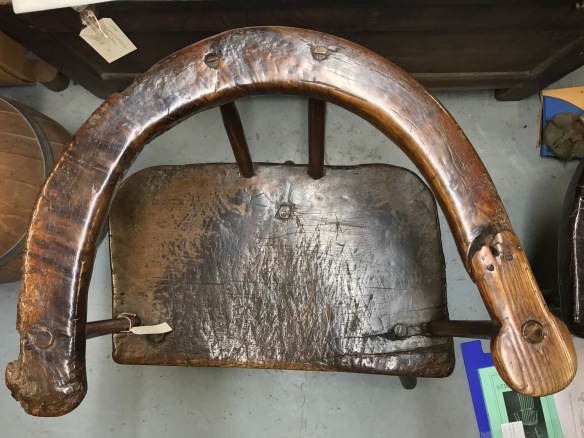
Rectangular seat and a one-piece carved arm on an early Stick Chair
Welsh Stick Chairs tend to have a much more aggressive rake and splay to their legs than Windsor chairs, and as a consequence do not always feature stretchers between the legs. Both three and four legged chairs are common, and the leg tenons are usually set further away from the perimeter of the seat than is often the case for Windsor chairs. The legs are typically tapered octagons or tapered cylinders, although tapered hexagons can also be found, and the sticks may also be octagonal or cylindrical in cross section. Because Welsh Stick chairs were traditionally not made by chair makers, the use of turned parts was uncommon and cylindrical legs or sticks would likely have been shaved by hand instead of being turned on the lathe, leaving distinctive facets and tooling marks. The sticks supporting the arm and comb may be set straight through the arm, or can be curved through the arm to give a “lobster pot” shape.
Native Species
In terms of timber choices, oak, elm and ash were (and continue to be) typically used as these native species are plentiful in Wales and have attributes which lend themselves well to chair making. Although elm is increasingly difficult to source, it is particularly prized for seats thanks to the interlocked grain which makes it resistant to splitting when driving the leg tenons home. Ash and oak were commonly used for legs and spindles, as they can be rived easily to yield strong, straight grained components. However, there were no strict rules regarding timber selection and surviving chairs also show the use of yew, and fruit woods.
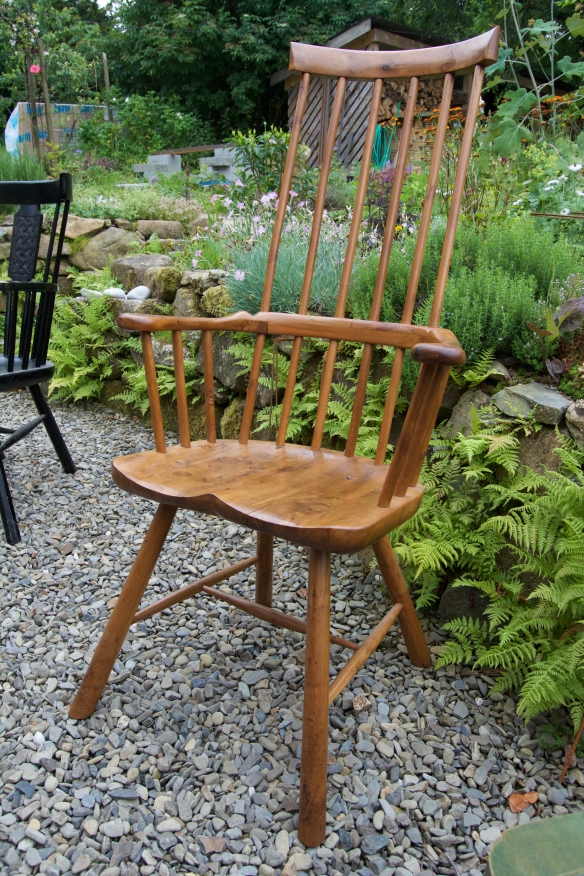
Stick chair in yew, by John Brown
Evolution of the Welsh Stick Chair
While the Welsh Stick Chair is certainly less common than Windsor chair traditions, the Welsh Stick Chair is enjoying something of a renaissance. The late John Brown is undoubtedly the most well-known Welsh Stick Chair builder, particularly thanks to his outspoken articles for Good Woodworking magazine in the 1990’s, but he is not alone. Chris Williams continues to make Welsh Stick Chairs from his Carmarthenshire workshop, while the form has a number of supporters in America, including Chris Schwarz and Don Weber.
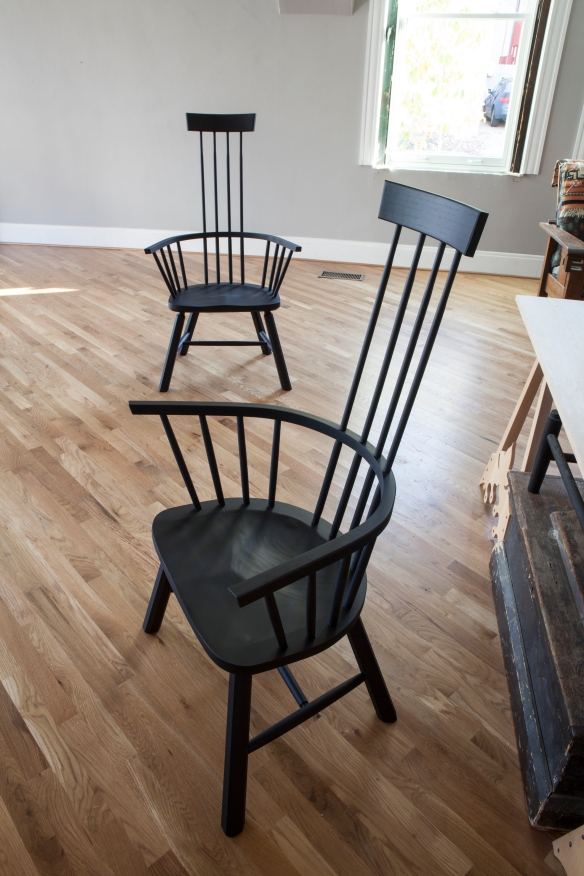
Pair of stick chairs by Chris Schwarz
Modern examples of the Welsh Stick Chair have adapted the form for contemporary tastes – often comb back chairs will feature fewer long sticks for a sleeker appearance, and milk painted or oiled finishes are common. The use of crook backs also appears to be less commonly used than scarf jointed or steam bent backs. But despite these adaptations, the form remains distinctive and easily recognisable as the Welsh Stick Chair.
The Welsh Stick Chair remains a relevant and exciting chair form that while not being as widely known as the Windsor, has a cult following among those who have been exposed to its charms, and continues to fascinate chair makers.
The author would like to thank the staff of St Fagan’s National Museum of History for allowing access to their collection, and for permission to reproduce photographs of their chairs.
Further Reading and Viewing
Welsh Stick Chairs – John Brown
Welsh Furniture 1250-1950 – Richard Bebb
Oak Furniture, The British Tradition – Victor Chinnery
Visit: St Fagan’s National Museum of History
Build: Build a Welsh Stick Chair with Don Weber
